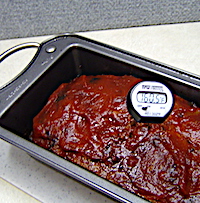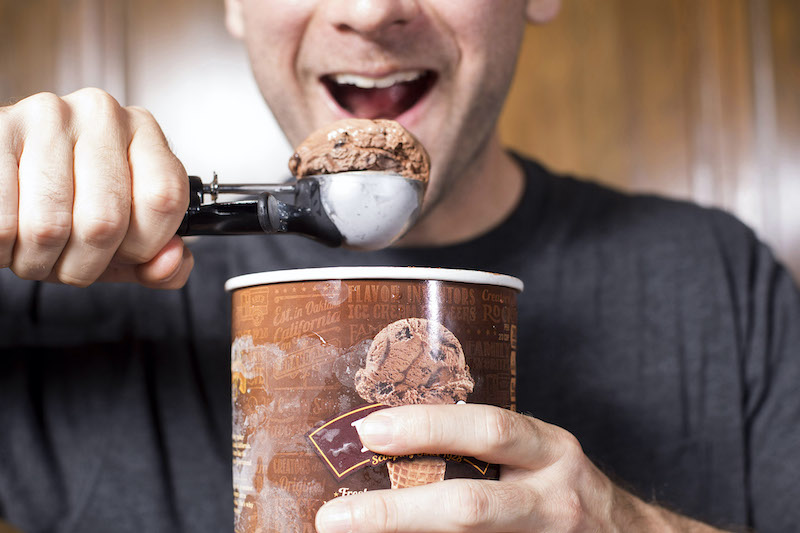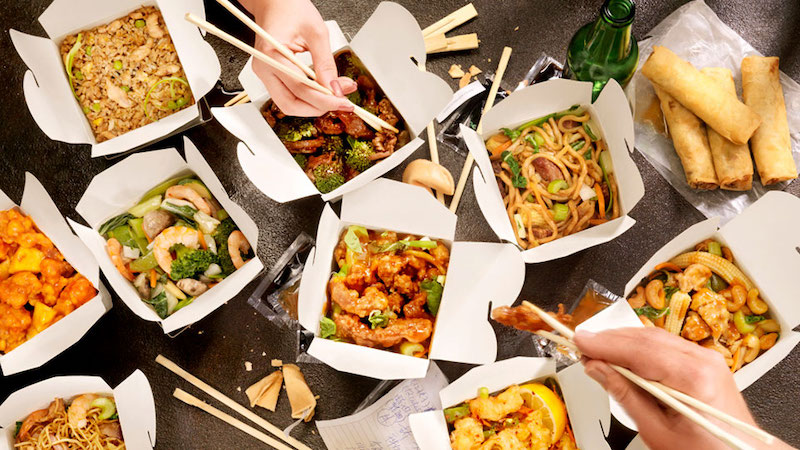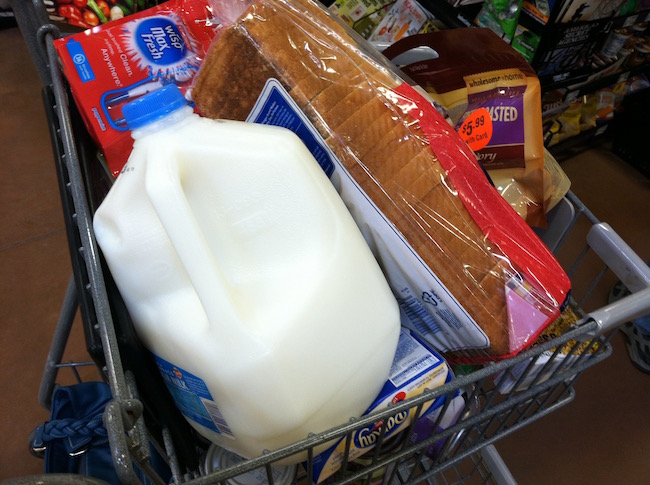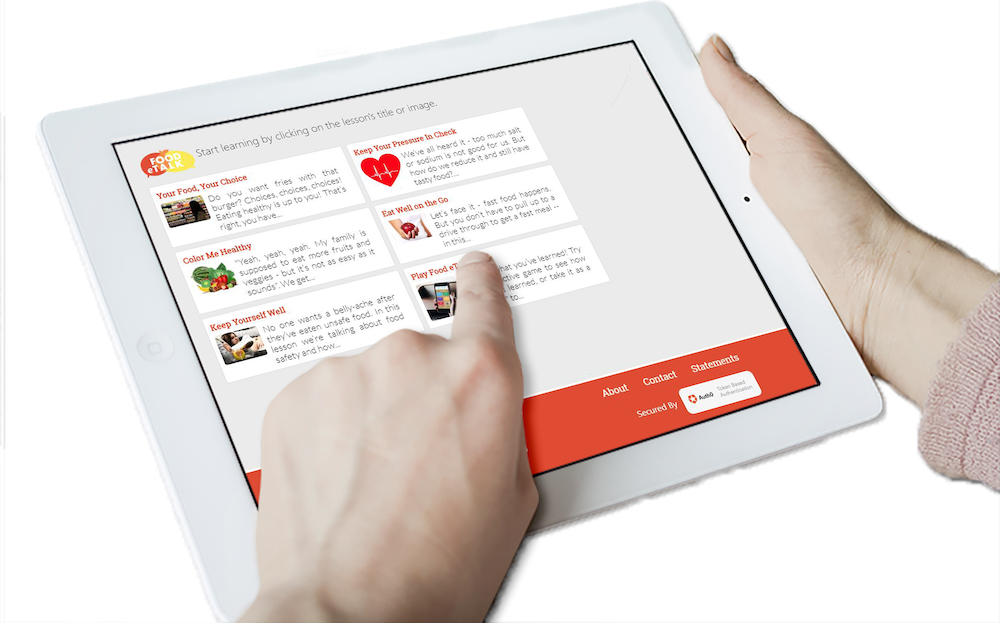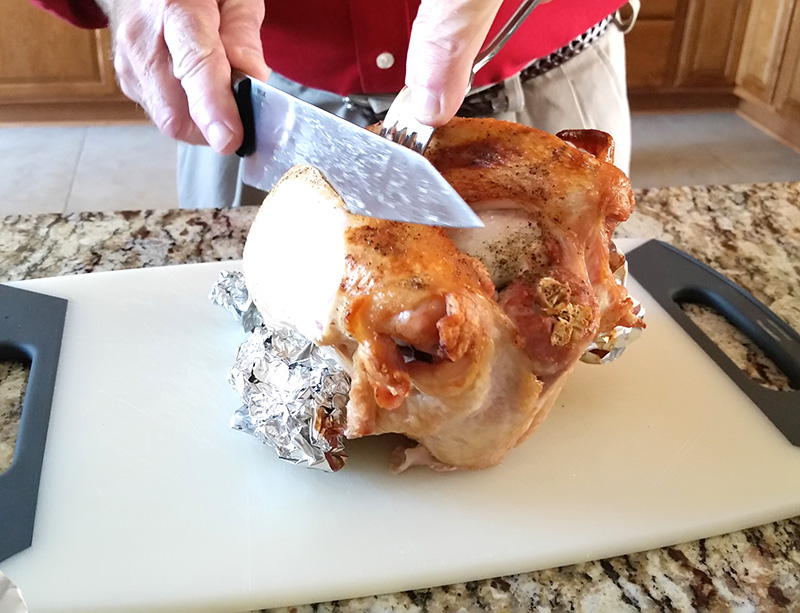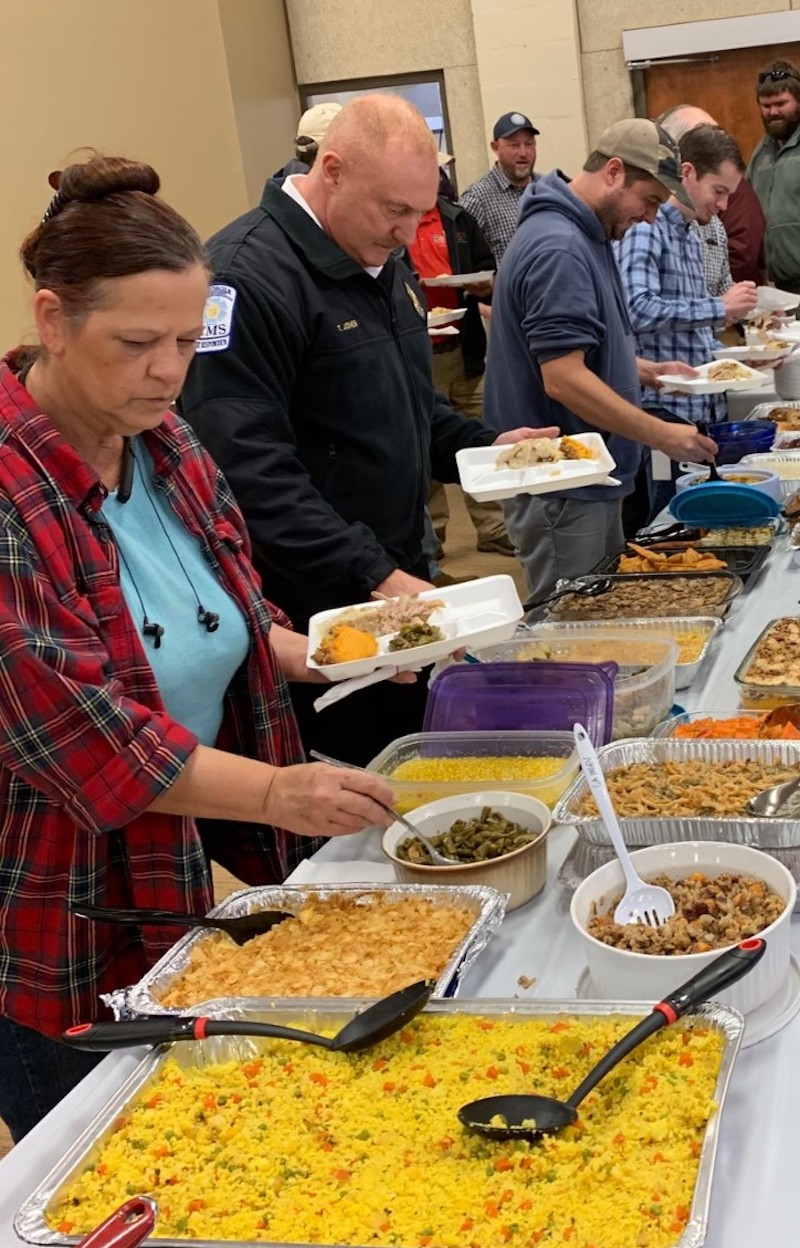Usual daily routines have been disrupted by the current COVID-19 crisis and many people are spending more time cooking at home than before. While our health is always on our minds, it is important to maintain safe food handling at this time so our lives are not further complicated by foodborne illness.
Even for those accustomed to preparing and cooking foods at home, a busier household than usual may mean more disruptions in the kitchen. Extra activity and hands can lead to foodborne illness unless you pay attention to safe food handling.
First, be sure to keep everything clean. That includes your hands and kitchen surfaces while you are preparing meals or snacks. Wash hands and kitchen surfaces often with hot, soapy water. Remember to wash cutting boards, dishes, and utensils after preparing each food item and before you begin preparing another food item.
If cutting boards or other surfaces have been in contact with raw meat, poultry or seafood juices, sanitize them after washing and rinsing them. Use one teaspoon of unscented, fresh household bleach mixed with one quart of water and immerse your items in this solution for five to 10 seconds, then let the items air dry.
Use paper towels for cleaning up kitchen surfaces as much as possible. Definitely do not clean surfaces with used cloth towels.
Next, always separate raw and ready-to-eat foods. Cross-contamination spreads bacteria from one food product to another or from a dirty surface or hands to food. This process begins at the grocery store and continues with carry-home bags and your refrigerator.
Use one cutting board for raw meat, poultry and seafood and another cutting board for ready-to-eat foods. Never place cooked food on a plate that previously held raw meat or poultry unless the plate has been thoroughly cleaned.
Other food-safety practices for food storage include refrigerating perishable food within two hours of it coming out of refrigeration. As warm weather approaches, that limit should be one hour when the temperature is above 90 degrees Fahrenheit. Cook or freeze fresh poultry, fish, ground meats and variety meats within two days; other fresh beef, veal, lamb or pork should be cooked or frozen within three to five days.
Wrap or package most foods securely, especially meats, poultry and seafood, to prevent leakage and cross-contamination. This also helps preserve quality.
Most refrigerated produce should be left unwashed in its original packaging or wrapped loosely in a plastic bag. It can be rinsed well or scrubbed under clean, running water before eating.
Greens that might seem extra dirty from the garden or field can be rinsed, but dry them very well before storing. Mushrooms should be stored in their original container with some openings or in a paper bag, instead of airtight. Leafy herbs do best with a damp paper towel wrapped around their stems before being placed in a plastic bag.
Consider that, in general, high-acid canned food, such as tomatoes, grapefruit and pineapple, can be stored unopened on the shelf for 12 to 18 months. Low-acid canned food, such as meat, poultry, fish and most vegetables, are best used within 2 to 5 years.
These recommendations are for food quality and apply only if the unopened can remains in good condition and has been stored in a cool, clean, dry place. Discard dented, leaking, bulging or rusted cans.
Many foods have to be cooked to safe minimum internal temperatures to be safe to eat. Use a clean, calibrated, accurate food thermometer to make sure meat and poultry are cooked to a proper temperature and keep an internal temperature cooking chart handy. (A good chart can be found at www.foodsafety.gov.)
Chicken and turkey should be cooked to an internal temperature of at least 165 F to be safe; ground meat and meat mixtures to at least 160 F; egg dishes to at least 160 F; seafood to at least 145 F; beef and other red meat roasts and chops to at least 145 F, with a three-minute stand time before serving.
It is still best to cook chicken and turkey to higher temperatures such as 170-180 F to remove pink appearance and rubbery texture. Thoroughly reheat leftovers to 165 F internal temperature and bring gravies, sauces and soups to a rolling boil.
Finally, chill everything promptly. Refrigerate or freeze leftovers within two hours by placing them in shallow containers to cool rapidly. Spread the containers around your refrigerator or freezer to cool them down quickly instead of stacking them.
Keep the refrigerator temperature at 40 F or below and the freezer at 0 F. Monitor the temperature with an appliance thermometer. Always thaw food in the refrigerator, in a cold-water bath or in the microwave right before using or cooking.
For more information on handling leftovers, visit news.uga.edu/tips-leftover-food-safety-techniques.

